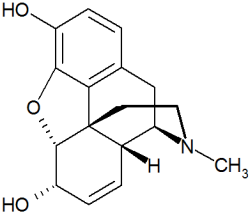SAN DIEGO -- Ligand Pharmaceuticals Incorporated (Nasdaq:LGNDE) today announced receipt of a letter from the Food and Drug Administration (FDA) requesting that the company make changes to the label of its sustained-release opiod product, AVINZA(R) (once-a-day morphine sulfate extended-release capsules).
The FDA letter said, "In vitro observations indicate that the extended-release characteristics of AVINZA are compromised in the presence of alcohol. Until the clinical implications of these data are fully assessed, we request that changes be made to the package insert," with the intent to provide adequate information for the safe and effective use of the drug. The company has also been asked by the FDA to send a "Dear Health Care Professional Letter" to appropriately inform these professionals of the label changes.
"The AVINZA package insert currently carries several precautions about use of the product with alcohol. The FDA suggested changes that would highlight and intensify warnings about alcohol intake while using AVINZA," said James L'Italien, Ph.D., Ligand's senior vice president for regulatory affairs and compliance. "We're analyzing the FDA's request and are in dialogue with the Agency. We may also need to do additional in vivo translational pharmacokinetic studies to accurately assess which of these label changes or clarifications are ultimately appropriate. We intend to work with the FDA to effect agreed upon label changes and the 'Dear Health Care Professional Letter' promptly."
The company will provide an update once this label-change process is complete.
About AVINZA
AVINZA (oral morphine sulfate extended-release capsules) is the first true once-a-day treatment for chronic moderate-to-severe pain in patients who require continuous, around-the-clock opioid therapy for an extended period of time. Approved by the FDA in March 2002, AVINZA consists of two components: an immediate-release component that rapidly achieves plateau morphine concentrations in plasma, and an extended-release component that maintains plasma concentrations throughout a 24-hour dosing interval. Ligand co-promotes AVINZA with Organon Pharmaceuticals USA Inc. in the United States.
About Ligand
Ligand discovers, develops and markets new drugs that address critical unmet medical needs of patients in the areas of cancer, pain, skin diseases, men's and women's hormone-related diseases, osteoporosis, metabolic disorders, and cardiovascular and inflammatory diseases. Ligand's proprietary drug discovery and development programs are based on its leadership position in gene transcription technology, primarily related to intracellular receptors. For more information, go to www.ligand.com.
Caution Regarding Forward-Looking Statements
This news release contains certain forward-looking statements that involve risks and uncertainties and reflect Ligand's judgment as of the date of this release. These statements include those related to discussions with the FDA and AVINZA labeling and possible clinical studies. Actual events or results may differ from our expectations. For example, there can be no assurance that the discussions with the FDA will be successful or that the FDA will not require more stringent package warnings or other actions that could adversely impact AVINZA sales or that the results of any additional clinical studies will not result in other label changes or product actions that could adversely affect the product. Additional information concerning these and other risk factors affecting Ligand can be found in prior press releases as well as in public periodic filings with the Securities and Exchange Commission, available via www.ligand.com. Ligand disclaims any intent or obligation to update these forward-looking statements beyond the date of this release. This caution is made under the safe harbor provisions of the Private Securities Litigation Reform Act of 1995.
COPYRIGHT 2005 Business Wire
COPYRIGHT 2005 Gale Group



